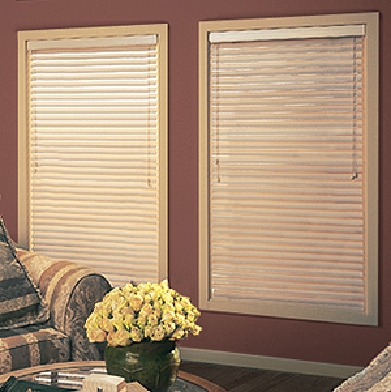Moving into a smaller space can feel overwhelming, especially if you’re used to having more room to spread out. However, downsizing doesn’t have to be a daunting task! With a little strategic planning and a few clever tips, you can make the transition to a smaller space smooth and stress-free. Whether you’re downsizing to save money, simplify your life, or just want a cozier living space, these tips will help you make the most of your new, smaller home. Let’s start!
Maximize Vertical Space
In a smaller space, maximizing vertical storage is key to keeping your home neat and organized. Invest in shelving units, wall-mounted baskets, and tall bookcases to make use of every inch of wall space. You can also look for furniture pieces with built-in storage, such as ottomans with hidden compartments or beds with drawers underneath. By thinking vertically, you can create more storage space without sacrificing valuable floor space.
Multi-Functional Furniture
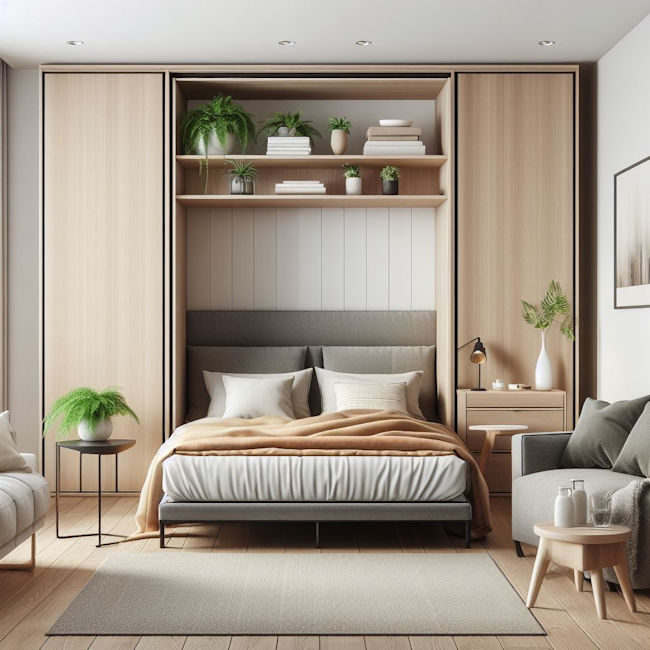
When you’re downsizing, every piece of furniture needs to earn its keep. Look for multi-functional furniture pieces that serve more than one purpose. For example, a coffee table with built-in storage or a sofa that converts into a bed can help save space and make your home more versatile. Also, consider furniture that can be easily folded or collapsed when not in use, such as folding chairs or tables. This will allow you to create more space when needed.
Choose Light and Airy Colors
In a smaller space, light and airy colors can help create the illusion of more space. Opt for neutral hues such as white, beige, or light gray for your walls, furniture, and decor. These colors will reflect light and make the room feel brighter and more open. You can add pops of color with throw pillows, rugs, and artwork to personalize your space without overwhelming it. Additionally, using mirrors strategically can also help make a small space feel larger by reflecting light and creating the illusion of depth.
Stay Organized
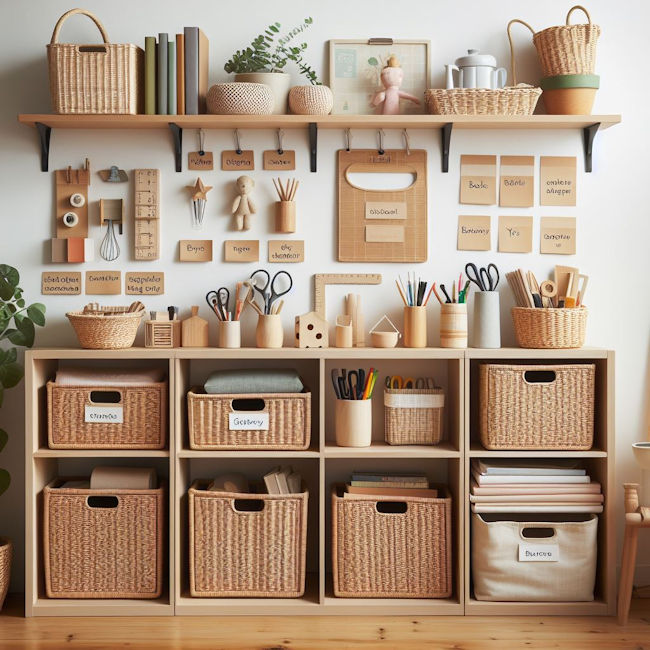
Once you’ve moved into your new, smaller space, it’s important to stay organized to prevent clutter from building up. Establish routines for cleaning, tidying, and decluttering regularly. Invest in storage solutions such as baskets, bins, and drawer organizers to keep everything in its place. Make use of labels and clear containers to easily find what you need. By staying organized, you’ll be able to maintain a clutter-free and functional living space in your new home.
Start Early and Declutter
One of the most important steps in downsizing is to start early and declutter your belongings. Begin by going through each room in your current home and making piles of items to keep, donate, sell, or throw away. Be ruthless in your decision-making—if you haven’t used or worn something in the past year, it’s probably time to let it go. This process can be time-consuming, so it’s important to start well in advance of your move date. Hiring professional movers can also help streamline the process and take some of the stress off your shoulders.
Utilize Underutilized Spaces
Don’t overlook the potential of underutilized spaces in your new, smaller home. Areas under beds, over doors, and even the backs of closet doors can offer additional storage solutions. Slim bins can slide under beds for off-season clothing or extra bedding, while over-the-door organizers can hold shoes, accessories, or cleaning supplies. Think creatively and use every nook and cranny to keep your new home organized and clutter-free.
Go Digital Where Possible

In today’s digital age, reducing physical clutter by digitizing items can be incredibly effective. Scan important documents, photographs, and even artwork to keep them safe and accessible without taking up physical space. This approach also makes it easier to organize and find these items when needed. Additionally, consider switching to e-books and streaming services for books and movies to eliminate the need for physical copies.
Invest in Quality Over Quantity
When downsizing, it’s important to focus on quality over quantity. Invest in well-made furniture and items that will last longer and serve multiple purposes, rather than filling your space with cheaper, disposable options. This mindset will help you create a comfortable, functional, and clutter-free living area. Choosing quality over quantity not only elevates the aesthetic of your smaller living space but also contributes to a sustainable lifestyle.
Create Outdoor Living Spaces
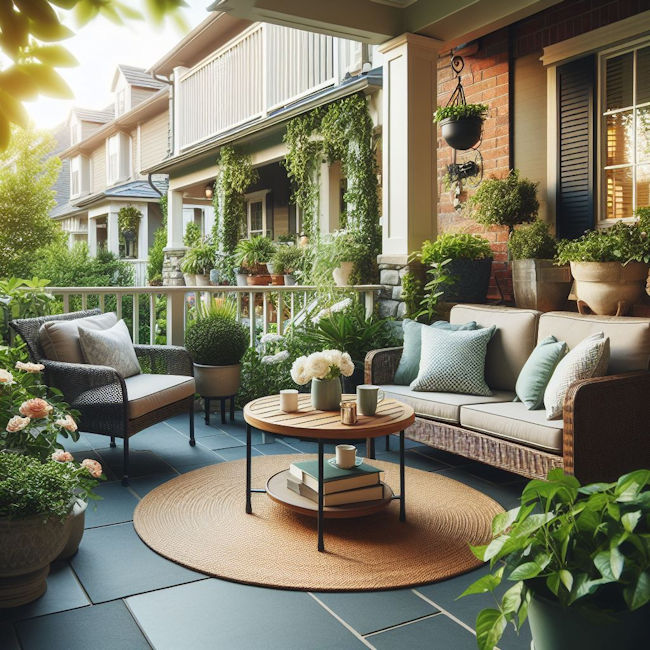
If your smaller home comes with outdoor space, make the most of it. Creating functional outdoor living areas can effectively extend your usable living space. Comfortable seating, a small table, and outdoor lighting can transform a patio or balcony into an inviting extension of your home. This can also provide a change of scenery and help alleviate any feelings of being confined to a smaller indoor space.
Adopt a Minimalistic Approach
A minimalistic approach to your belongings can greatly benefit your transition to a smaller space. Keep only what you truly need, use, and love. This not only helps in creating a more spacious environment but also simplifies cleaning, maintenance, and your overall lifestyle. Embrace the concept of “less is more” and you’ll find that downsizing can lead to a more fulfilling and clutter-free life.
Use Lighting to Enhance Space
Proper lighting can make a huge difference in how your smaller space feels. Utilize a mix of overhead, task, and accent lighting to brighten up the room and create a sense of openness. Mirrors placed opposite windows can also amplify natural light and make the space appear larger. Avoid heavy curtains or blinds that block out light, and instead opt for sheer curtains or shades to maintain natural light while providing privacy.
Rotate Seasonal Items
Instead of trying to fit every item you own into your new space, consider rotating seasonal items. Store winter clothes, holiday decorations, and other seasonal items in labeled bins and switch them out as needed. This keeps your living space decluttered and ensures that only current items take up valuable space. It’s also a good opportunity to reassess if you truly need all the items in storage, and perhaps consider donating or selling some of them.
Cultivate a Space for Relaxation
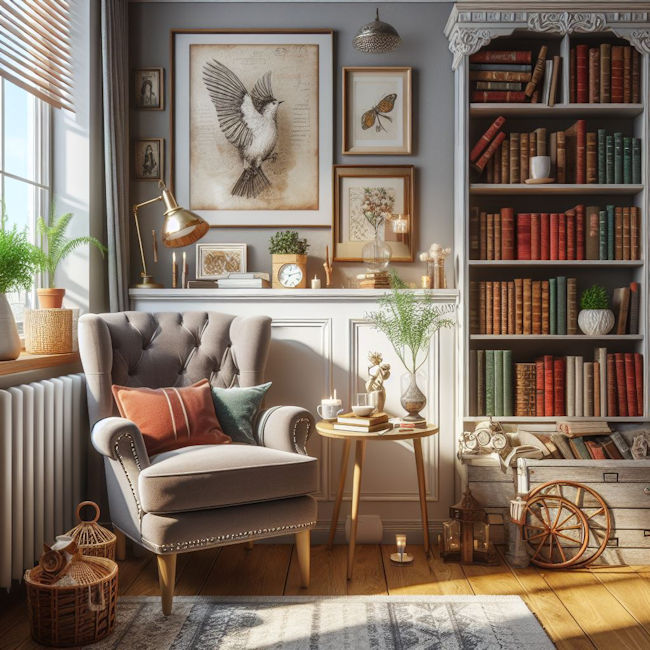
Even in a smaller space, it is important to designate an area where you can relax and unwind. This could be a cozy corner with a comfortable chair and a bookshelf, or a small meditation space with plants and calming decor. Having a dedicated spot for relaxation can help make your home feel more spacious and serene. It’s important to create a balance between functional and comfortable elements in your smaller living space.
Integrate Technology Wisely
In a smaller living space, integrating technology wisely can enhance functionality without cluttering the area. Opt for wireless devices and smart home systems that can be controlled via a single app. This reduces the need for multiple physical gadgets and remotes. Consider mounting TVs and speakers on walls to free up surface space and investing in multi-purpose tech items like tablets, which can serve as reading devices, televisions, and computers.
Personalize with Multi-Use Decor
Personalizing your space is key to feeling at home, but in a smaller environment, every item should serve a purpose. Choose decor that doubles as storage or functional items. For instance, decorative baskets can be used for storage, and a beautiful vase can double as a utensil holder. Wall art with built-in shelves adds personality while providing a place to store books or display keepsakes. This approach allows you to surround yourself with items that reflect your style without sacrificing precious space.
Schedule Regular Decluttering Sessions
Living in a small space requires an ongoing commitment to decluttering. Set aside time each month to go through your belongings and decide what to keep, donate, or discard. This habitual decluttering helps prevent the accumulation of unnecessary items and ensures your space remains organized and spacious. Regularly reassessing the usefulness and emotional value of your possessions can also reinforce a mindful approach to consumption and living.
Embrace the Flexibility of Modular Furniture
Modular furniture is a godsend for those moving into a smaller space. These versatile pieces can be adapted or rearranged to fit various needs and layouts, offering a tailor-made solution to space constraints. For example, modular sofas can be broken down into chairs or smaller couches, and shelves can be reconfigured to fit different spaces or serve new purposes over time. This adaptability not only maximizes your living space but also allows for a personalized touch that can evolve with your lifestyle.
Moving into a smaller space doesn’t have to be a daunting task. By following these simple downsizing tips, you can make the transition smooth and stress-free. Start early, declutter ruthlessly, maximize vertical space, choose multi-functional furniture, and stay organized! With a bit of planning and creativity, you can make the most of your smaller space and create a cozy and functional home that suits your needs. So, if you’re planning a move to a smaller space, keep these tips in mind to make the process easier and more enjoyable. Happy downsizing!
You might also like:
- Is Downsizing Right for You?
- Downsizing Mistakes People Make in Retirement
- Downsizing to Pay Off a Mortgage – Is it a Good Idea?
- Low-Cost Ways to Keep Your House Cool
- Nomad Living: Managing Finances for a Mobile Lifestyle
- 6 Tips for Saving Money on Home Repairs
- 7 Ways to Cut Costs on Your Home Remodel Project
- Home Upgrades to Save Money Every Day
- Surprising Ways a Storage Unit Can Save You Money

